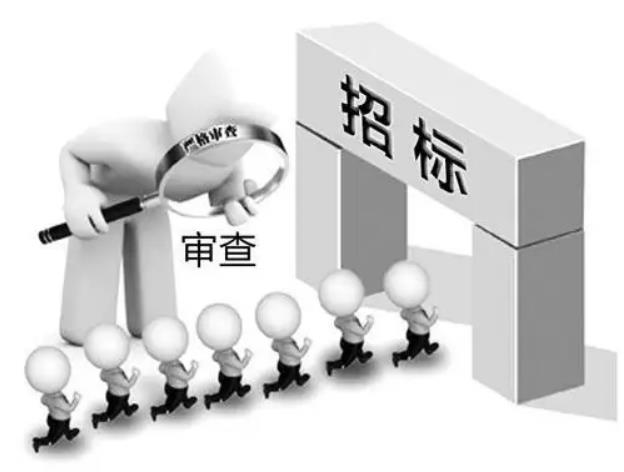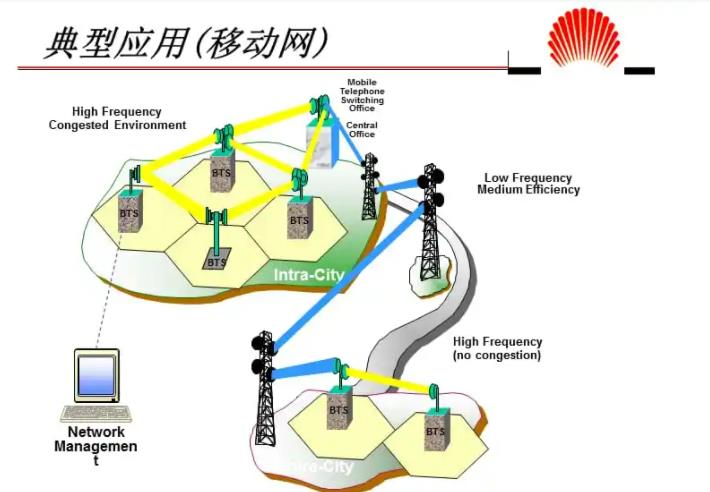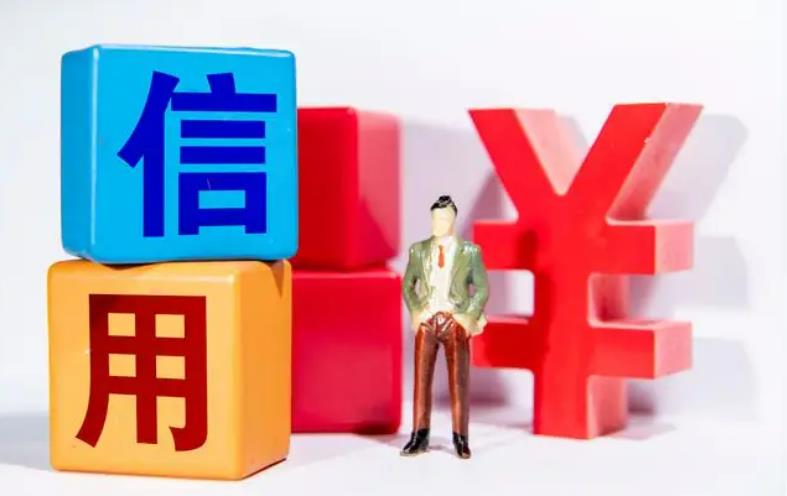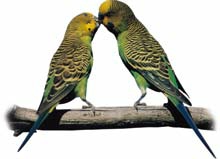传统节日Traditional Festivals
1“年”是怎么来的?
What is the origin of nian?
The Chinese character nian(年)or xin nian(New Year,新年)means“harvest.”The Spring Festival always falls sometime before or after li chun(the beginning of Spring,立春).There is a folktale that tells the origin of nian.
A long time ago there lived a frightful demon named nian(年)who had a large horn,a hugemouth,and sharp teeth,and he did evil things wherever he went.The heavenly gods always locked him up in a prison somewhere in a remote mountain,and he was permitted to leave the prison only once each year.
When the demon left prison,he would come down to the villages and look for food,sometimes even eating local people.During this time,villagers would hide in-side their houses and place some of their livestock outside,hoping to satisfy the demon's appetite.
Later,local people discovered that the demon was afraid of red color,flames,and loud noises.So in the evenings,when he was released,people would light up their houses,set off firecrackers,and beat gong and drums.The next day everybody would rejoice and congratulate each other on avoiding the disaster.
Notes:①folktale民间故事②demon妖魔③livestock家畜④appetite胃口⑤firecracker爆竹
2人们在春节前和春节期间主要做些什么?
What do people mainly do before and during the Spring Festival?
The Spring Festival,also known as the Lunar New Year,is the most important traditional national festival in China.Preparations for the New Year Festival start during the last few days of the old lunar year.Some traditional familiesmake laba(腊八)porridge,a porridge made of glutinous rice,millet,berries,lotus seeds,beans,and gingko.They also offer sacrifices to the Kitchen god.Most families will also purchase necessi-ties for the New Year.Their shopping items include not only oil,rice,flour,chicken,duck,fish and meat,but also fruit,candies,and nuts.In addition,new clothes and shoes for the children,gifts for the elderly,friends and relatives,are all on their purchasing list.
At home,family members clean their homes,cut their hair,and take baths.In addition,they paste Chunlian(春联),spring couplets in red color on entrance gates or doors.All of these poems contain auspiciouswords to send off the old year and usher in the new one.In some traditional families,people burn joss sticks or incense to their ancestors.
On the Eve of the Spring Festival,people stay up late or even all night and pray for peace in the coming year.That night every house or apartment is brightly lit in the hope that anything that might bring people bad fortune will disappear under the dazzling light.At the same time,a large family dinner is served,which includes southern-styled round-shaped rice dumplings and jiaozi(饺子),or northern-styled steamed dumplings.People set off firecrackers as the New Year approaches,and greeteach otherwith good wishes for the happy New Year.
On the New Year's Day,it is a folk custom not to cut your hair or do any housework associated with clothing or utensil washing for fear that the good luck will be washed away.The same goes to the use of knives,scissors,or nail clippers.Sharpened blades might cut off the thread that links good fortune and families in the coming year.During the New Year celebration,people do their best not to say words concerning sickness and death.
Everyday from New Year's Eve to the fifteenth day of the firstmonth,there are various New Year activities.Many people hold up a bamboo-framed dragon and parade it through the streets.The lion dance is a traditional activity which brings joy and happiness.Percussionists beat drums and gongs as the accompaniment to the dances.Wedding ceremonies are also popular in cities and villages throughout the land at this time.
Notes:①porridge粥②joss stick(中国祭祀用的)香③dazzling耀眼的④percussionist打击乐器演奏者⑤accompaniment伴奏
3关于门神的由来有什么传说?
What are the legends about the origins of the Door god images?
In rural areas,some families still paste images of the Door god on their doors or on the walls inside their rooms.There are many interesting folktales about the Door gods.
One source says that these images derived from Qin Shubao(秦叔宝)and Yuchi Gong(尉迟恭),military generalswho had helped found the Tang Empire(618-907).Emperor Tai Zong of the Tang Dynasty fell sick and heard ghosts howling in his dreams.The nextmorning,he told his dream to Qin Shubao and Yuchi Gong who buckled on their armor; the former grabbed a mace,and the latter an iron staff.They stood on guard in the night outside the door of the emperor's chamber.Henceforth the emperor dreamed no more of ghosts.However,the emperor felt it was improper for his two generals to stand guard night after night.He told a painter to draw the images of the two on a piece of paper that he hung on the palace entrance as“Door gods.”As the story spread far and wide,many ordinary people followed suit,pasting the same pictures of Door gods on their doors for the purpose of driving away evil spirits.
The second source says that a long time ago there grew an orchard ofmagical peach trees on the top ofMt.Dushuo(度朔山).On the top of each peach tree dwelt a giant rooster that crowed at dawn towake up the roosters in other villages.Some of the peach branches formed archways where thousands of demons passed back and forth.
One day some demons began gnawing at these trees,and their behavior disturbed the order of the world.So the Jade Emperor assigned two generals,Shen Tu(神荼) and Yu Lei(郁垒),to go to themountain to drive away the demons.When they arrived at the mountain,the two generals stood guard and threw the demons to feed the tigers on the mountain.When the Yellow Emperor learned of this,he had painters paint images of the two generals on peach-wood tablets and place on the doors of houses to keep demons away.Since then,it became a custom to paste pictures of the two ferocious generals on the doors of their houses on New Year's Day to keep demons away.
The third source says that a long time ago,there was a beautiful island called Shuodu(朔度)where a people of great virtue lived,and they pursued a simple,happy and peaceful life.To the northeast of the Shuodu Island was an ugly island called the City of the Ten Thousand Demons(万鬼城).This awful place was the home of vicious demons(恶鬼).One day,the demons attacked Shuodu Island and took all the people to the demon city as slaves.These Shuodu people suffered,and many of them died from starvation or beatings.While the Shuodu people suffered,two huge creatures appeared from the sea,and one was named Shentu(神荼)and the other Yulei(郁垒).Both of them carried thick peach-wood sticks.They used the sticks to break the wall and kill the demon king.The other vicious demons gave up the fight and begged formercy.The huge creatures promised to protect the Shuodu people from further attack by the demons.Since then,the Shuodu people started to place their images on the doors of their houses in an attempt to keep demons away.
Notes:①howling咆哮的;哭哭啼啼的②buckle扣住;扣紧③grab抓住④mace权杖⑤ferocious凶猛的
4为什么人们要在春节时放爆竹?
Why do peop le set off firecrackers during the Spring Festival?
Originally people set off firecrackers to keep away evil spirits and demons,and to seek happiness.Legend has it that there was a humanlike beast that was extremely savage and hid itself in remote mountains.Toward the end of every year,it would come out to kill people and animals.However,when the New Year was approaching,people set off firecrackers to scare away the beast because the beast was afraid of light and loud noise.
There is another saying about the origin of burning firecrackers.Once there were small but terrible monsters,called Shanxiao(山魈),who lived in the forests.They lived on raw shrimps and crabs from themountain streams.They used to come out of the forests and steal salt from places where human beings lived.However,they were afraid of fire and loud noises.So when they entered villages,people would burn fire in their courtyards.They would also throw bamboo in the fire that would make a loud popping sound after being heated; this sound would also scare away themonsters.
Setting off firecrackers is a tradition started in the remote pastwith burning bamboo stems.As you know,bamboo stems have joints and are hollow inside.When they are burnt,the air inside expands after being heated,and the stems themselves bust open and crack.Later on,people placed gunpowder into bamboo stems and invented firecrackers.Later,paper rolls replaced bamboo stems.In the end of the Qing Dynasty(1616-1911),there were already special workshops in China,making all kinds of firecrackers.In a book entitled Dijing Suishi Jisheng(Wonderful New Year Days in the Imperial Capital,《帝京岁时记胜》),the author vividly described how people in Beijing during the Qing Dynasty set off firecrackers on the first day of a year.“The noise of firecrackers like roaring waves and thunderclaps was heard in and outside the palace; itwenton without stop-ping for thewhole night(闻爆竹声如击浪轰雷,遍于朝野,彻夜无停).”Firecrackers indeed liven up the New Year holiday as they are a thrilling sight that brings great joy to adults and children alike.
Notes:①savage野性的;凶猛的②hollow空的③liven up使活跃④thrilling令人激动
5你对元宵节知道多少?
How much do you know about the Lantern Festival?
The Lantern Festival falls on the 15th day of the 1st lunarmonth,and hasmany fun activities.The highlight is to watch colorful lanterns in varied shapes which include electric wall lamps and electric-powered lanterns of life-size animals.In addition,groups of lanterns recountepisodes from classic novels.The brightness of the moonlight and the lantern light enhances each other.
This festival dates back to the Warring States Period(475 BC-220 BC),when people watched lanterns under themoonlight.At first,they did this on this day to offer sacrifices to the Sun God,whowas known as the Lord of the East.Lantern Festival became official in the Han Dynasty.According to ancient Chinese history,af-ter the death of Liu Ying(Han Emperor Hui,汉惠帝刘盈),Queen Lü(吕后)usurped the power of the state and set up her own dynasty.Zhou Bo(周勃),Chen Ping(陈平),and other top court officials wanted to continue Liu's dynasty.Therefore after the death of Queen Lü,they jointly started a campaign to get rid of Queen Lü's administration and made Liu Heng(刘恒) the emperor of the Han Dynasty.The campaign was successful,and the Han Empire was restored.Because Queen Lü's dynasty ended on the fifteenth day of the firstmonth,Emperor Wen(汉文帝) named the fifteenth day of the firstmonth yuan xiao jie(元宵节).In ancient times,the word xiao means“evening,”and yuan“the firstmonth of a year.”
Why is yuan xiao jie translated to the lantern festival in English? Maybe it is due to a variety of lanterns on show.This custom at first was related to the night curfew in ancient China.Common people had been forbidden to go outdoors or get together atnight.Later,the imperial rulers relaxed the night curfew during this festival because the rulers also wanted to have fun themselves.
By the Southern and Northern Dynasties(420-589),oil lanterns,lacquer lanterns,some burning incense,and burning candleswere on display in the festival.The lightsbeamed together,reflecting in thewater. The exhibition of lanternswas part of the festival.
In the Tang Dynasty(618-907),the Lantern festivalwasa three-day national holiday and all government officeswere closed on the fourteenth,fifteenth and sixteenth.Curfew was lifted for three nights for city residents to go outand have asmuch fun as they liked.Emperors would watch lanterns from an imperial tower on the night of the festival.The imperial household,the Daoist and Buddhist temples,and the households of the nobility and the rich would all put up colorful lanterns.
In the Song Dynasty(960-1279),the lantern exhibition was prolonged from three to five nights.There were lanterns made of colored glass,or even of white jade.Human figures,landscapes,flowers,and birds were all drawn on the lanterns.There were also lantern pagodas,lantern hills,lantern balls and lantern arches.
By the Ming Dynasty(1368-1644) under Zhu Yuanzhang(朱元璋),the lantern exhibition was extended to ten nights.In the Ming and Qing dynasties theatrical performanceswere staged alongside the exhibition.
Lantern-making is a distinct craft of unknown origin,but some believe that it has existed for around two thousand years.Lantern-making combines craft skills in metal and wood working,paper-cutting,drawing,oil painting,weaving,and embroidery.Different areas in the country have developed their own distinctive styles.
Notes:①highlight最突出(或最精彩)的部分②electricpowered电动的③episode片断④usurp篡夺⑤get rid of除去⑥curfew宵禁⑦nobility贵族(阶层)⑧distinctive有特色的
6端午节是怎样产生的?
What is the origin of the Dragon Boat Festival?
Duan wu jie(the Dragon Boat Festival) is one of the three main folk festivities in China.The other two are the Spring Festival and the Mid Autumn Festival.The Duan Wu Festival used to be the day that a tribe of the ancient Wu and Yue(now Jiangsu and Zhejiang) would offer sacrifices to its totem—the dragon.These people would cut their hair short and tattooed their bodies with dragons.They considered themselves descendents of the dragon.With the decline of the totem culture,the old practice typical of a totem society gave way to the building of dragon boats.However,as days wentby,the festival has lost its original significance and is now used to honor a great Chinese poet named Qu Yuan of the Warring States Period(475 BC-221 BC).
Qu Yuan was a patriotic poet from the State of Chu during the Warring States Period.There Qu Yuan proposed a series of progressive reforms,including domestic political reforms and a new legal system.However,the forces of corruption,represented by Jin Shang(靳尚),opposed Qu Yuan and led the king to distrust him.So Qu Yuan left the capital and lived as a drifter.With patriotic fervor,he produced many odes to express his concern for the fate of his state and people.In 278 BC,when the Qin troops stormed the capital,and the downfall of Chu became imminent,Qu Yuan drowned himself in the Miluo River(汨罗江) near the presentday Changsha(长沙).He chose not to live and see his state be destroyed.When the news of his death came,the local people rushed to the scene and rowed boats along the river in an attempt to find his remains,but they were never recovered.The people of the Chu mourned his death,and every year afterwards they threw bamboo tubes filled with rice into the river as a sacrifice to him.This is supposed to be the origin of the custom of rowing dragon boats and eating zong zi(粽子)during the Dragon Boat Festival.
Zong zi is glutinous rice wrapped up in reed leaves.Originally itwasmade as an offer to the dragon as a sacrifice.According to a legend,during the Eastern Han Dynasty(25-220) there lived in Changsha a man named Ou Hui(欧回),who one day met another man named the Minister in Charge of the Affairs of Three A-ristocratic Families(闾大夫).Thisman told Ou Hui,“It is very good of you to offerme gifts of rice,butmost of them are stolen and devoured by the river dragon.In the future,please wrap them up in chinaberry leaves and tie them up with color threads.The leaves and threads will scare away the dragon,and he will never touch them again.”
Notes:①totem图腾②tattoo文身花纹③corruption腐败④drifter流浪汉⑤imminent即将来临⑥devour吞没⑦chinaberry楝树果
7什么是清明节?
What is the Clear and Bright Festival?
The Qing Ming Festival(the Clear and Bright Festival,清明节) has been one of the most popular festivals in China for thousands of years,and continues to this day.On this day,people go and pay respects to the deceased at their tombs.As a custom people sweep and clean the tombs and mourn the dead.This festival gives the living an opportunity to honor their deceased ancestors.
The festival takes place in early spring,when all life begins to renew and the fields are green with life,and is a good time for outings in the countryside to enjoy the beauty of the land.In ancient times,Qing Ming was the day for all urban inhabitants to have an outing on the city outskirts.This outing was called taqing(treading on greens,踏青).During the taqing time,people would make garlands out of willow tree twigs and wear them on the head.Women would plait the twigs into fine rings and pin them on the hair as a sign of their desire to stay youthful forever.
Poets throughout the ages have expressed the activities and sentiments on that day.Here is one by the Tang Dynasty(618-907) poet Du Mu(杜牧):
It continues to rain in the Qing Ming season,
Which makes a traveler on the road very sad indeed.
When he asks where to find an inn,
A cow-boy points to a place in the distance
—the Apricot Blossom Village.
(清明时节雨纷纷,路上行人欲断魂。借问酒家何处有?牧童遥指杏花村。)
It isworthmentioning Riverside Scene at Qingming Festival(《清明上河图》),the most exceptional scroll painting of the Northern Song Dynasty(960-1127).The painting vividly portrays life in Bianliang(汴梁),the capital city of the Northern Song Dynasty,during the Qing Ming Festival and beginswith a few people paying respects to their dead kinsmen at the tombs,then follows with scenes along the banks of the Bianhe River lined with willow trees common of the spring-time in the Qing Ming Festival.As the river course gradually widens,the picture shows more people towing boats,and others loading and unloading goods.Onlookers crowd a nearby bridge; restaurantsand tea housesare by the river; the road is full of cartsand people carrying things on shoulder-poles.
8什么是中秋节?
What is the Midautum n Festival?
Every year the Midautumn Festival(中秋节) falls on the 15th day of the eighth lunarmonth.According to the ancient calendar system,the eighth lunar month is in themiddle of the autumn season and the fifteenth day of the eighth month falls in the middle of thatmonth.On that night,themoon is supposed to be brighter and fuller than any other month.In China,a fullmoon is symbolic of family reunion,so the day is also known as “The Day of Reunion.”
This day is a grand occasion because there exist manymyths and legends about themoon.Themost popular one is about Chang E(嫦娥),the girl who swallowed a magical potion,and suddenly found she could fly.She flew to the Moon Palace and decided to stay there for a while.In the Moon Palace,she met an old man,who called himself Wu Gang(吴刚)who had been sent there to cut down a laurel tree as a punishment for themistakes he had made while studying to be an immortal.But the opening on the tree closed immediately after he withdrew his axe and so he had to keep on cutting and cutting.
During the Midautumn Festival,when night falls,the moon shines overhead,and a gentle breeze blows with the smell of cassia blossoms in the air.In some places,people go and see the beautiful sight of cassia blossoms at the festival; in other places,they have a family reunion dinner,drink sweetened wine,and eat lotus roots and water chestnuts.
Moon cakes(月饼)are the most popular food during the festival.These cakes appear round in shape.People began making moon cakes during the Tang Dynasty(618-907),and the food became a very popular pastry in the Song Dynasty(960-1279) when they were available everywhere as an offering to the moon.Big cakes then were over one foot in diameter,with carvings of themoon palace and themoon rabbit on them.Some people ate them after a sacrificial ceremony while others kept them until the New Year Eve.In the Ming Dynasty (1368-1644) people exchanged moon cakes as a way to express the happiness at their family reunion.In the Qing Dynasty(1616-1911),moon cakes were stuffed with walnut paste,similar to the oneswe now have.The ways of making moon cakes vary from place to place,and so their flavors are also not the same.The stuffing includes cocoanut paste,lotus seed paste,assorted fruit seeds and nuts,egg yolk,chicken,ham,cassia,and date paste.
Notes:①symbolic象征的②swallow燕子③laurel月桂④pastry糕饼⑤assorted什锦的⑥yolk蛋黄
免责声明:以上内容源自网络,版权归原作者所有,如有侵犯您的原创版权请告知,我们将尽快删除相关内容。














